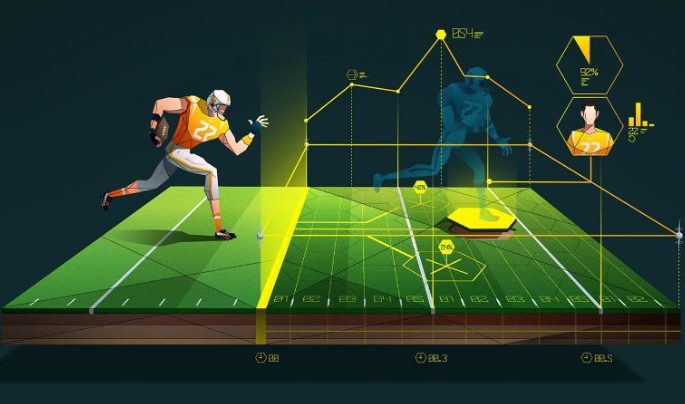The sports technology market has become a dynamic and rapidly evolving sector, shaping the way athletes train, compete, and fans engage with their favorite sports. As we delve into 2024, the industry is poised for unprecedented growth, driven by technological advancements, increasing investments, and a growing demand for innovative solutions across various sports disciplines.
Technological Advancements Driving Growth:
Wearable Technology: Wearable devices have revolutionized the way athletes monitor their performance, providing real-time data on crucial metrics such as heart rate, body temperature, and even hydration levels. The market is witnessing a surge in the adoption of advanced wearables, including smart clothing and augmented reality (AR) goggles, enhancing the overall training experience for athletes.
Smart Equipment: The integration of sensors and IoT (Internet of Things) technology into sports equipment is becoming more prevalent. Smart equipment, such as sensor-equipped basketballs or tennis rackets, enables players to analyze their technique, track performance, and receive personalized feedback. This not only aids professional athletes but also trickles down to the amateur and recreational levels, playing sports more accessible and enjoyable for a broader audience.
Data Analytics and Artificial Intelligence: The use of data analytics and artificial intelligence (AI) in sports has reached new heights. Teams and athletes are leveraging AI algorithms to analyze massive datasets, gaining insights into player performance, injury prevention, and strategic decision-making. This data-driven approach is not only enhancing individual and team performance but also contributing to the evolution of coaching methodologies.
Investments Fueling Market Expansion:
Venture Capital Inflow: The sports technology sector has attracted significant investments from venture capital firms and private investors. This influx of capital is propelling innovation, fostering the development of cutting-edge technologies and solutions. Startups specializing in sports analytics, virtual reality training, and sports wearables are among the primary beneficiaries of this financial support.
Collaborations and Partnerships: Major players in the sports technology market are forging strategic collaborations and partnerships to leverage each other’s strengths. These collaborations extend beyond industry boundaries, involving technology firms, sports organizations, and even healthcare providers. The goal is to create synergies that drive innovation and provide comprehensive solutions to the evolving needs of athletes and sports enthusiasts.
Growing Demand for Fan Engagement:
Immersive Fan Experiences: Technology is not only transforming the way athletes train and compete but also how fans experience sports. Virtual and augmented reality technologies are being harnessed to create immersive fan experiences, allowing supporters to feel more connected to the action. Virtual stadiums, 360-degree replays, and interactive apps are just a glimpse of the innovations enhancing fan engagement.
E-sports and Gaming Integration: The intersection of sports and gaming is becoming increasingly prominent. E-sports, where professional gamers compete in video game tournaments, has gained mainstream recognition. Sports technology is playing a pivotal role in bridging the gap between traditional sports and e-sports, creating new avenues for fan engagement and revenue generation.
Key Challenges and Opportunities:
Data Privacy and Security: With the abundance of data generated by sports technology, ensuring the privacy and security of sensitive information is a growing concern. Companies in the sports tech market must invest in robust cybersecurity measures and adhere to stringent data protection regulations to build and maintain trust among users.
Inclusivity and Accessibility: While technology is advancing rapidly, ensuring inclusivity and accessibility for all athletes, regardless of their level or background, remains crucial. The market has an opportunity to develop solutions that cater to a diverse range of sports and athletes, promoting inclusivity and equal access to technological advancements.
Future Trends Shaping the Landscape:
5G Technology Impact: The rollout of 5G technology is set to have a profound impact on the sports technology market size. Faster and more reliable connectivity will enable real-time data transmission, enhancing the performance of wearables, AR/VR applications, and live streaming. This development will further elevate the overall sports experience for both athletes and fans.
Biometric Monitoring Advancements: Continuous advancements in biometric monitoring technologies are on the horizon. From more accurate heart rate monitoring to advanced sleep tracking, these innovations will provide athletes with comprehensive insights into their physical and mental well-being, enabling personalized training regimens and optimized performance.
The sports technology market is set to experience unprecedented growth, driven by technological innovations, increased investments, and a focus on enhancing both athlete performance and fan engagement. The industry’s ability to address challenges, embrace inclusivity, and stay ahead of emerging trends will determine its continued success in shaping the future of sports. The synergy between sports and technology is not only transforming the way we play and watch sports but also opening new frontiers of possibilities that were once thought to be confined to the realm of imagination.
Global Reach and Market Expansion: The sports technology market is not confined by geographical boundaries, with its influence spreading globally. Emerging markets are increasingly recognizing the potential of sports technology to enhance athlete performance and attract a broader audience. As technology becomes more accessible, particularly in developing regions, the market is witnessing a surge in demand for cost-effective and scalable solutions that cater to the unique needs of diverse sports communities.
Customization and Personalization Trends: One of the defining trends in the sports technology market is the emphasis on customization and personalization. Athletes and teams are seeking tailored solutions that cater to their specific requirements. This trend extends to wearable devices, training programs, and even fan engagement strategies. The ability to offer personalized experiences not only enhances performance outcomes but also fosters a deeper connection between athletes, teams, and their fan base.
Environmental Sustainability in Sports Tech: As the world grapples with environmental challenges, the sports technology market is increasingly incorporating sustainability into its innovations. From eco-friendly materials in sportswear to energy-efficient technologies, there is a growing awareness of the industry’s environmental impact. Sustainable practices are not only becoming a point of differentiation for companies but also aligning with the values of environmentally conscious athletes and consumers.
Rise of Niche and Specialized Technologies: The sports technology market is witnessing the rise of niche and specialized technologies catering to specific sports and disciplines. Whether it’s biomechanics-focused solutions for golf or analytics platforms tailored for soccer, the trend is towards highly specialized tools that address the unique demands of each sport. This shift towards specialization reflects the market’s maturity and its ability to provide targeted solutions that maximize impact in specific sporting contexts.
The sports technology market in 2024 is a multifaceted landscape, characterized by global expansion, a focus on customization, a commitment to environmental sustainability, and the emergence of highly specialized technologies. As the industry continues to break new ground, the synergy between sports and technology is fostering a new era of possibilities, not only in the realm of athletic performance but also in the way sports are experienced and enjoyed by a diverse and global audience. The trajectory of the sports technology market underscores its role as a dynamic force shaping the future of sports and contributing to the evolution of how we perceive, participate in, and celebrate athletic endeavors.

A captivating wordsmith and dynamic blogger. With her pen as her wand, she weaves enchanting tales and thought-provoking insights that leave readers spellbound. Embrace the magic of her storytelling prowess and embark on an unforgettable literary journey with this talented writer.





